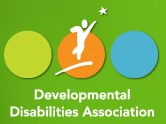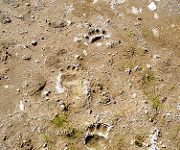Last week I was at a café , having a “What do you do?” conversation at an outdoor table. When I told people I’ve been working on a workplace safety blog, “Well, I’ve got a story for you!” exclaimed a 33-year-old named Jimmy. “My buddy and I were working for a construction guy and, when I asked him to hire a safety guy, he punched me in the face!”
Monthly Archives: November 2010
One witness described it as “epic.” Last weekend I slipped down seven stairs in my house. Somehow I “surfed” down all of them on my feet.
People talk. Messages from different people and companies, in different situations, are going out to different groups of people. People listen, and maybe ask questions. Then they leave and go home. But how can we encourage them to take away the ideas we offer?
If you’re not on Twitter yet, you probably should be. I started a Twitter account for this blog (@speakinofsafety) about six months ago and I’ve had a personal account since 2008. I’ve encountered so many ideas, photos, comments, debates, links, and invitations to events in real life. Check out my links to great OHS resources you can “follow” on Twitter to keep in the loop.

Recently I heard about a new safety training package for workers who live with challenges like autism, Down’s Syndrome, and fetal alcohol exposure. It’s called “WorkSmart: A Warehouse Safety Video and Curriculum for Employees with Developmental Disabilities” and it was created by the Developmental Disabilities Association (DDA). I talked with Kirsti Inglis, who oversees the DDA’s employment programs, to find out more.
At least two of the rescued Chilean miners have silicosis – an occupational disease that leads to severe lung damage. It usually takes many years (or decades) for workers to develop this disease after exposure to particles of silica – and it affects workers in Canada too.
“Don’t ever be afraid to trust your gut instincts,” says nurse Barb Valois, speaking to home care workers on a new video from WorkSafeBC. “You always have the right to refuse unsafe work.”
It’s free to sign up and create a profile that details your career experience, and you can join groups that are a great forum for conversation. These groups let you post and answer questions from others in your field. You can use them to recruit new staff, find new clients, or seek employment. Here are six LinkedIn groups that focus on the topic of safety.

BC archaeologist Shannon Cameron takes precautions every time she goes to work in the woods. But one day, she and her coworker met a bear whose curiosity outweighed his instinct to avoid humans.


